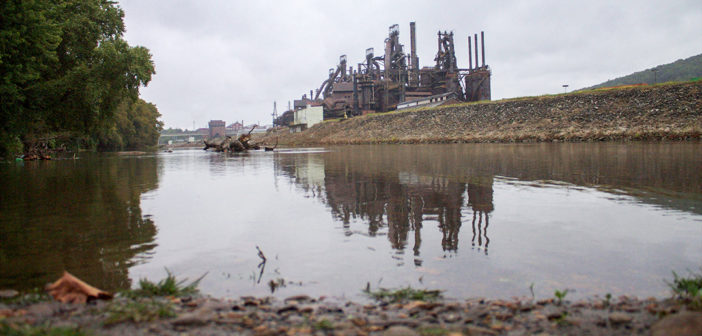Despite recent reports about chromium-6 contamination in water supplies across the nation, its amounts are below a dangerous level in the Lehigh Valley.
The Environmental Working Group released data Sept. 20 from a study on the contaminant, which was made famous by the movie “Erin Brockovich” in 2000. The study stated chromium-6 was found in tap water affecting more than 200 million Americans. The chemical was found throughout water sources in the Lehigh Valley.
The study notes possible side effects of ingesting the carcinogen can be skin rashes and cancer.
The report shows an interactive map including breakdowns of chromium-6 levels in parts per billion from tests done from 2013 to 2015. There are no environmental regulations specifying maximum chromium-6 levels except in California, which is where the original outbreak was discovered in 1993. The public health goal is for the level to be below 0.02 parts per billion, but the regulation imposed a legal limit of 10 parts per billion, much higher than the health goal.
Stephen Peters, an associate professor of earth and environmental science, said the two goals are often different for contaminants. In general, the legal limit looks at much more than just health. He said the attainability of the public health goal and the cost are two factors that contribute to the decision making.
“I think you want to be careful not to interpret (the public health goal) as ‘Everybody’s got to be there or we’re all in serious trouble,'” Peters said. “For some things, the goal is zero, and zero is an unrealistic concentration to ever meet. There’s just no such thing as zero. So I think we want to keep that in mind.”
While there is no legal limit for chromium-6 levels in Pennsylvania, data from the Lehigh Valley shows the level would be well below the 10 parts per billion limit enacted in California. For example, the average chromium-6 level in the City of Bethlehem water system, which is where Lehigh gets its water for buildings on campus, was 0.066 parts per billion. Peters said he’s not sure if Pennsylvania or any other state will create their own state limit as a result of these findings.
Peters said balancing the economics behind reaching a public health goal likely contributes to the goal being so much higher than the legal limit in California.
“We make other choices every day that probably carry a much higher risk than drinking the water,” Peters said. “Car accidents, fried food, too much salt, too much sugar, smoking — all those things. There are all of these other things that have really high risks that we just need to weigh this, which sounds really devastating, with all of the other risks we take every day.”
Arup SenGupta, a professor of civil and environmental engineering, said while the lead issue in the Lehigh Valley was about a six on a scale of one to 10, the chromium-6 issue is a one or less than one out of 10. Still, he said people should continue to be aware of the issue if new spikes in chromium-6 levels are found.
“It’s good to be overly cautious and aware,” he said, “but such things shouldn’t also drive us in the wrong direction that we start taking measures for something which are probably of secondary or tertiary significance as opposed to many other things. If you compare this thing with lead . . . there’s no comparison between the two.”
Chromium is a naturally occurring element that has two oxidation states: chromium-3 and chromium-6. Peters said chromium-3 is required by humans in small amounts, much like other metals such as iron and magnesium. Chromium-6 can occur naturally, but it can also be produced from industrial processes.
According to the National Institute of Health, chromium-3 helps “enhance the action of insulin” as well as processes related to metabolism. It appears naturally, such as in broccoli or grape juice, among other common foods.
Peters said there doesn’t seem to be a human need for chromium-6, but that the two forms of chromium can also change into one another after being ingested, making it difficult to measure actual chromium-6 levels at any time.
“There’s always something in the water, and for the most part at really low levels, unless you’re exposed to it for a long period of time and it’s not too dangerous, you’re not going to have too many problems,” said Sharon Friedman, a journalism professor and director of the science and environmental writing program. “Cancer clusters are very difficult to determine statistically, and so you’re really looking for heavy doses such as what (Erin Brockovich) found in her very famous case. What we have here doesn’t look like we have any problem whatsoever.”
Barbra Plohocki, the director of environmental health and safety, said the city is responsible for water testing, because that’s where the water is coming from. There is no requirement for the university to run its own tests as well.






Comment policy
Comments posted to The Brown and White website are reviewed by a moderator before being approved. Incendiary speech or harassing language, including comments targeted at individuals, may be deemed unacceptable and not published. Spam and other soliciting will also be declined.
The Brown and White also reserves the right to not publish entirely anonymous comments.